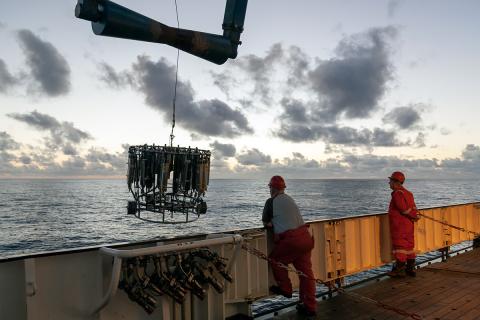FULL REVIEW PAPER
Image

What is already happening?
- The salinity of UK shelf seas, and the adjacent Atlantic Ocean, has been highly variable on annual and decadal timescales with no clear long-term trends.
- In the past few years, salinity of eastern North Atlantic waters west of the UK has dramatically decreased, probably in response to earlier atmospheric changes in the western North Atlantic.
CONFIDENCE LEVEL
MEDIUM
Medium evidence, high agreement
In general, there is a high level of consistency between the various information sources available, with apparent differences associated with high multi-annual to decadal variability.
What could happen in the future?
- Most 21st Century projections suggest that UK shelf seas, and the adjacent Atlantic Ocean, will be less saline than present, driven by ocean-circulation changes in response to climate change.
- Greater salinity decreases are projected for the North Sea, than the Irish and Celtic Seas.
CONFIDENCE LEVEL
MEDIUM
Medium evidence, medium agreement
There is increased confidence in salinity projections. What was a weak diagnosis of centennial-scale freshening has been reproduced in multiple and more-detailed studies. The scale of the freshening also appears to be stronger and our understanding of the driver of this change has been improved.
Key Challenges and Emerging Issues
- Building knowledge on the ocean-shelf exchange processes that drive multiannual variability and long-term trends in the shelf seas.
- Utilising more data from sustained observations to identify multidecadal salinity changes.
- Developing key metrics on salinity change for use in assessments, supported by analysis (e.g., Ocean Data Tool (ODaT)) and reanalysis (e.g., Copernicus) tools.